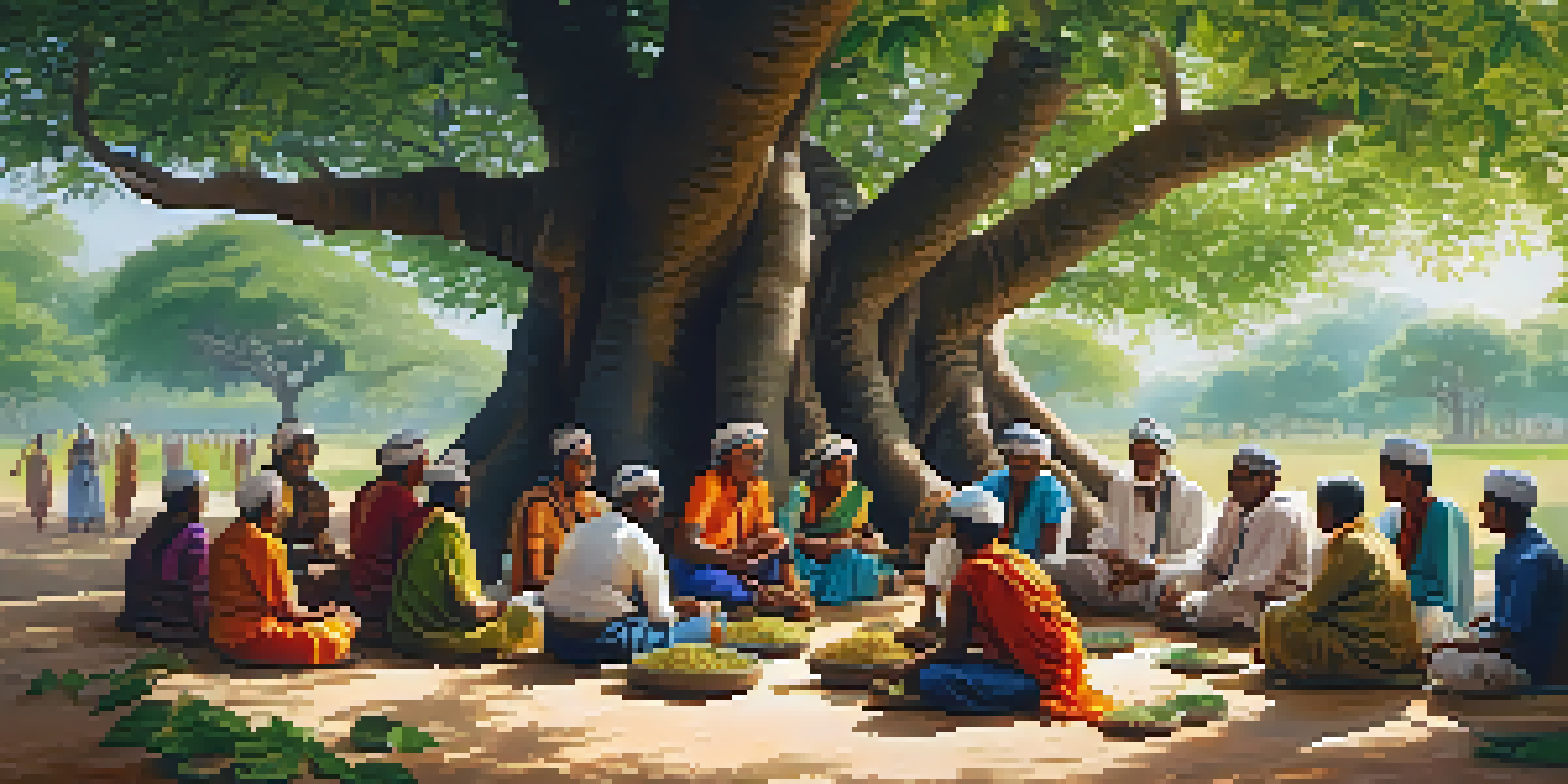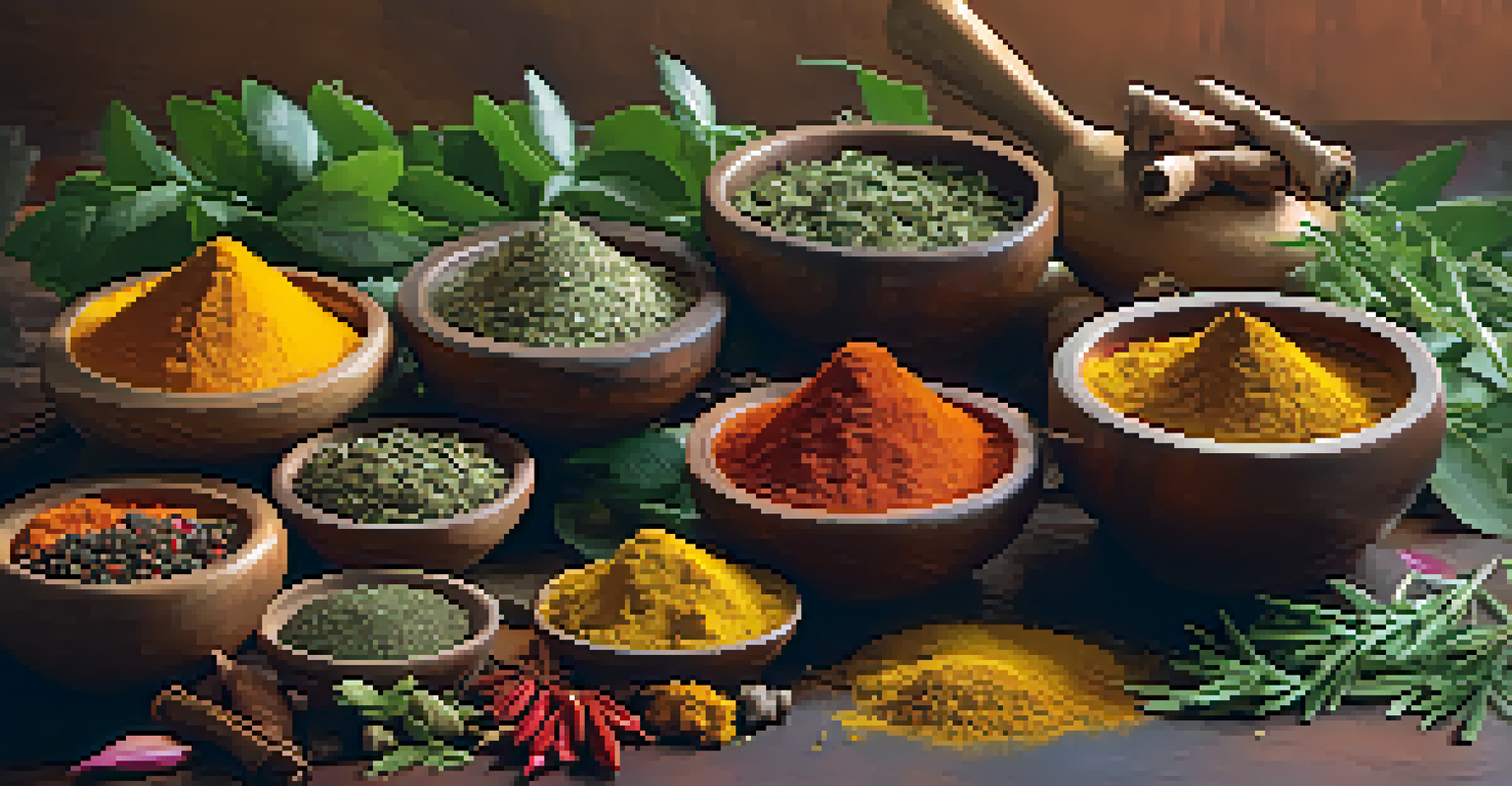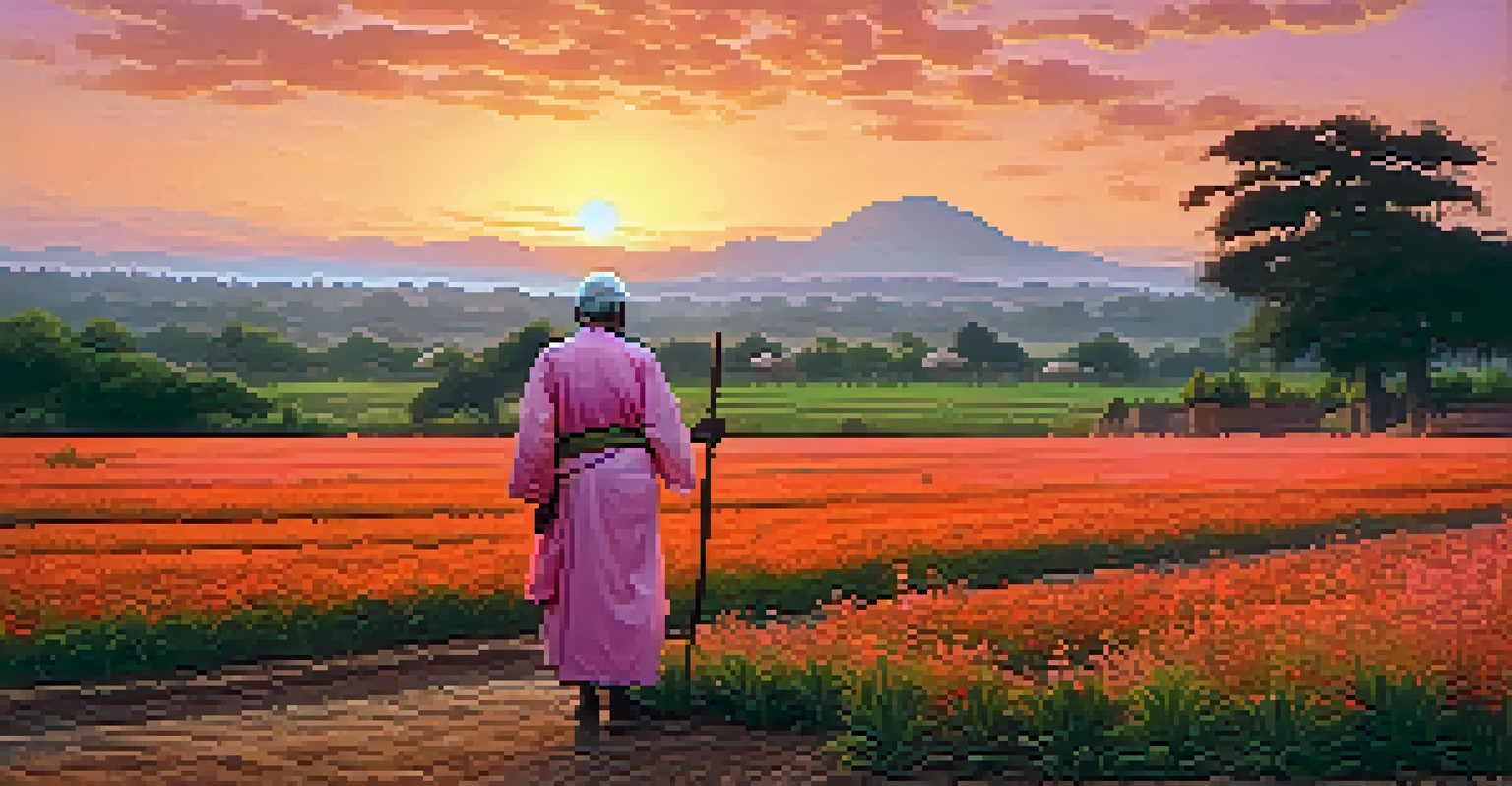Herbal Remedies: Traditional Healing Practices in Indian Villages

Understanding Traditional Healing in Indian Villages
Traditional healing in Indian villages is deeply rooted in cultural practices and beliefs. These remedies often involve the use of locally sourced herbs and plants, passed down through generations. Villagers rely on these methods not just for physical ailments but also for their mental and spiritual well-being.
Herbs are the Earth's natural medicine, and they are essential to our health and well-being.
The knowledge of herbal remedies is typically held by village elders or local healers, known as 'vaidyas.' They use their understanding of nature's bounty to treat various conditions, often drawing from a rich history of trial and error. This localized approach fosters a sense of community and trust in the healing process.
For many, these practices represent a connection to their heritage and an alternative to modern medicine. While contemporary treatments have their place, the wisdom of traditional healing remains invaluable, showcasing the importance of preserving these age-old practices.
Common Herbal Remedies Used in Villages
In Indian villages, several herbal remedies are particularly popular for treating common ailments. For example, turmeric is widely used for its anti-inflammatory properties, often mixed with milk to create a soothing drink. Similarly, neem leaves are renowned for their antibacterial qualities and are used in various forms, from pastes to infusions.

Another commonly used herb is ginger, which villagers often rely on for digestive issues and colds. It can be brewed into a comforting tea or added to meals for both flavor and health benefits. These herbs are not just ingredients; they are integral parts of the villagers’ daily lives and wellness routines.
Herbal Remedies: A Cultural Heritage
Traditional healing practices in Indian villages are deeply rooted in cultural beliefs, utilizing locally sourced herbs for physical, mental, and spiritual well-being.
Moreover, many villagers incorporate seasonal herbs into their diets as preventive measures. This practice emphasizes the idea that food can be medicine and highlights the importance of seasonal eating, aligning with nature's rhythms for optimal health.
The Role of Community and Knowledge Sharing
In Indian villages, the sharing of knowledge about herbal remedies is a communal effort. Elders often host gatherings where they teach younger generations the significance and uses of various plants. This not only preserves traditional knowledge but also strengthens community bonds.
Traditional medicine is a treasure trove of knowledge that we must preserve and integrate with modern practices.
These gatherings are often lively events, filled with storytelling and laughter as villagers share their personal experiences with different remedies. Such practices create a sense of belonging and ensure that the wisdom of the past is not lost. It’s a beautiful blend of learning and camaraderie.
In this environment, herbal knowledge becomes a collective treasure, enriching the lives of all involved. This communal aspect emphasizes that healing is not just about the remedies themselves but also about the connections and support systems that surround them.
Challenges Facing Traditional Healing Practices
Despite their rich history, traditional healing practices face significant challenges today. The rise of modern medicine and changing lifestyles have led many to overlook herbal remedies. This shift poses a risk of losing valuable knowledge that has sustained communities for centuries.
Additionally, environmental changes and urbanization threaten the availability of many medicinal plants. As villages modernize, the natural habitats where these herbs grow are increasingly affected, making it difficult for villagers to access them. This not only impacts health practices but also the local economy, which often relies on these plants.
Community Knowledge Sharing is Key
Elders play a vital role in preserving herbal remedies by sharing knowledge with younger generations, fostering community bonds and ensuring the survival of traditional practices.
Moreover, the younger generation may be less inclined to learn these traditional methods, viewing them as outdated. It’s crucial to find a balance between modern advancements and preserving these time-honored practices to ensure their survival.
Integration of Modern Medicine with Traditional Remedies
Interestingly, there's a growing movement towards integrating modern medicine with traditional herbal remedies. This approach encourages healthcare providers to acknowledge the benefits of both systems, offering a more holistic view of health. Collaboration between practitioners can lead to improved outcomes for patients.
For instance, some healthcare facilities in rural areas are beginning to incorporate herbal treatments alongside conventional therapies. This not only validates the importance of traditional knowledge but also provides patients with more options for their health care needs. It’s a win-win situation, creating a bridge between the old and the new.
Moreover, this integration fosters respect for diverse healing practices, encouraging a more inclusive healthcare environment. As more studies emerge highlighting the efficacy of herbal remedies, we may see an even greater acceptance of these time-honored techniques in modern healthcare settings.
Herbal Remedies and Sustainable Development
The use of herbal remedies in Indian villages aligns closely with sustainable development goals. By utilizing locally sourced plants, villagers not only promote their health but also contribute to the conservation of biodiversity. This practice encourages the sustainable use of natural resources, ensuring that they remain available for future generations.
Furthermore, the cultivation of medicinal plants can provide economic opportunities for villagers. By tapping into the growing market for herbal products, communities can enhance their livelihoods while preserving their cultural heritage. It’s a beautiful cycle of sustainability that benefits both people and the planet.
Integration with Modern Medicine
There is a growing movement to blend traditional herbal remedies with modern healthcare, promoting a holistic approach that respects and utilizes both systems for better patient outcomes.
In this context, herbal remedies are more than just health solutions; they are a vital part of an eco-friendly lifestyle. As awareness about sustainability increases, the value of these traditional practices is likely to rise, further solidifying their relevance in the modern world.
Conclusion: The Future of Herbal Remedies in India
As we look towards the future, the role of herbal remedies in India remains both crucial and promising. While challenges exist, the increasing interest in natural healing methods offers a glimmer of hope. This growing awareness can lead to a resurgence in the appreciation of traditional practices.
Moreover, as more people seek alternative health solutions, the demand for herbal remedies may rise, encouraging the preservation of this knowledge. Communities can come together to safeguard their heritage, ensuring that these valuable practices continue to thrive.

Ultimately, the future of herbal remedies in Indian villages lies in the balance between honoring tradition and embracing modernity. By fostering a dialogue between the two, we can ensure that the wisdom of the past enriches the health and well-being of future generations.